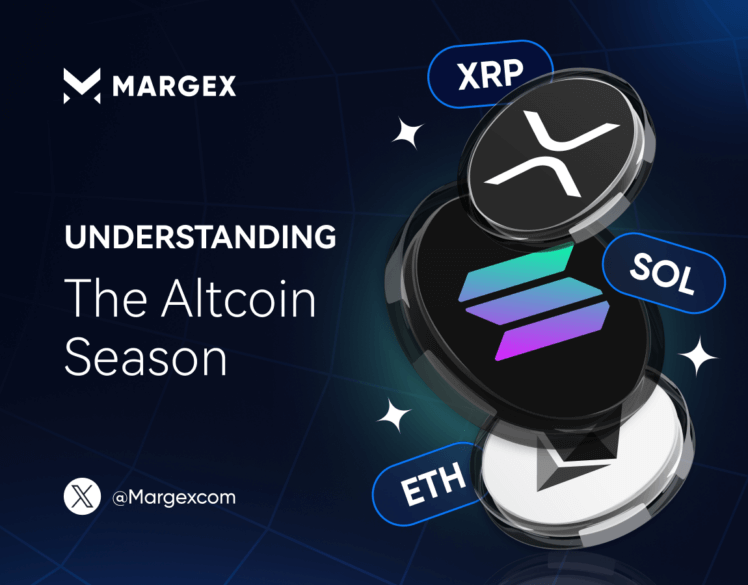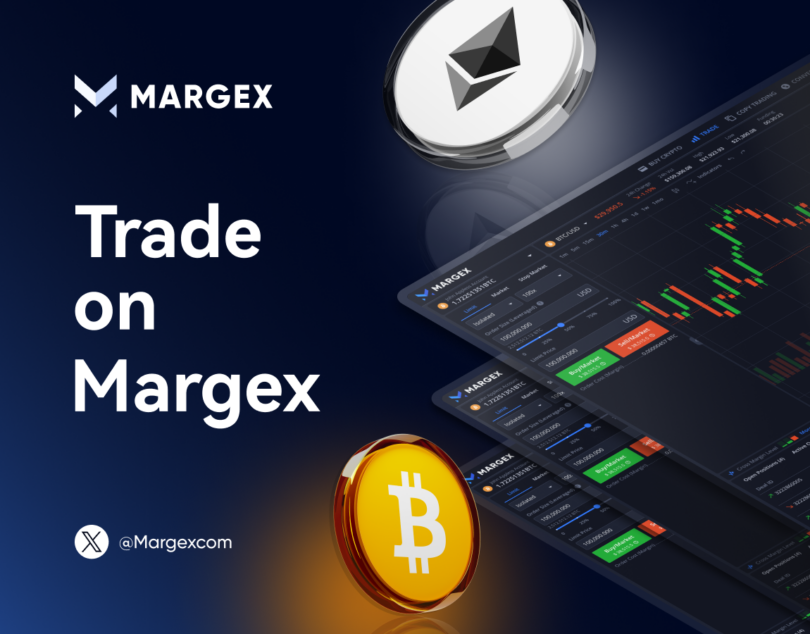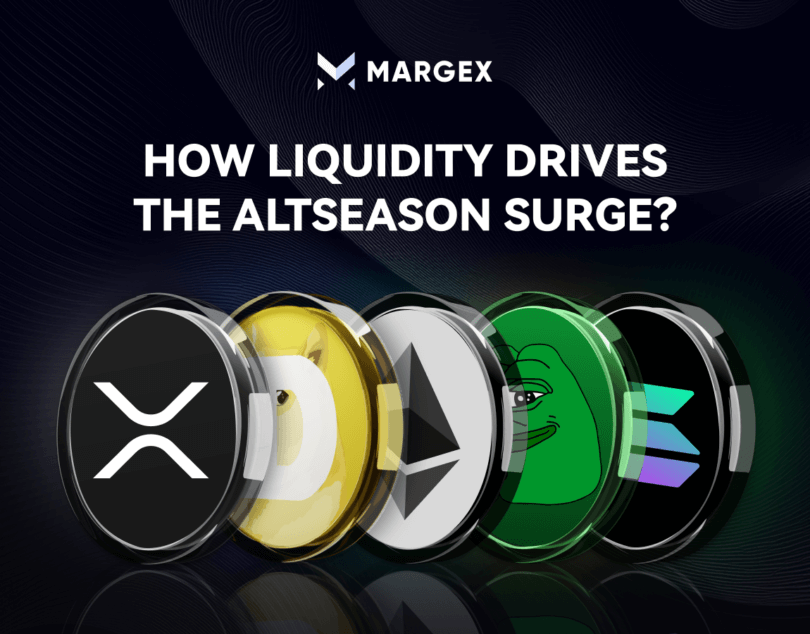
Are you an existing player in the crypto market? If so, you likely resonate with the idea that ‘crypto is cyclical’ – a concept that encapsulates the dynamics of liquidity, and the flow of capital, in the crypto world.
It is well known that when Bitcoin forms a range, traders will always ask each other if an alt season is coming, even though it is not yet an extremely attractive market for altcoins. Largely a contraction of the words ‘altcoin’ and’ season,’ alt season refers to a time cycle when certain altcoins become hyped and gain attention.
With the most recent altseason around early 2021, many traders are mainly optimistic about what will come. Within this bull market cycle is an altseason yet to come when major cryptocurrencies like Bitcoin and Ethereum underperform, and altcoins soar.
Want to dive into this exciting market phase? This guide allows a close examination of the flow of liquidity in crypto markets and practical strategies to use the opportunity during this rapidly changing period fueling the altcoin season and what may usher the next explosion of altcoins.
Understanding Altcoin Seasons and Crypto Market Dynamics
What Defines an Altcoin Season?
Altcoin Season describes when the market moves to altcoins. During this time period, altcoins begin to do really well, and you can often outperform Bitcoin. This phenomenon has become more apparent because the crypto ecosystem is evolving and gaining various digital assets.
As the price of Bitcoin increases, the remainder of the market frictionally falls, and as altcoin seasons come and go, these tokens experience increased trading activity resulting in a reduction in Bitcoin’s market share. The phases are often fed by bullish sentiment and a rush of new and old traders who deploy their capital in up-and-coming projects. During altcoin seasons, the crypto market can get to levels of optimism that no one has seen before.
The Evolution of Altcoin Seasons
Altcoin seasons became a thing of 2017 when we had the initial coin offering boom. Projects such as Ethereum (ETH), Ripple (XRP), and Litecoin (LTC) were big during this time because they took Bitcoin’s digital gold narrative a step further by utilizing Bitcoin’s value in creative ways.
Late 2017 saw the end of this era of excitement, with a significant bull run that was nipped in the bud soon afterward in 2018. A tide of regulatory scrutiny and a string of failed projects led to market corrections.
In 2020 and 2021, we saw a second major alternative season called ‘DeFi Summer’. During this period, decentralized finance (DeFi) tokens, metaverse projects, and NFTs exploded, all of which were tokens like Uniswap (UNI), Sandbox (SAND), and Solana (SOL).
However, the optimistic direction ended in 2022, when rising global interest rates and bearish macroeconomic conditions brought serious altcoin price drops. As speculative interest ebbs and flows, each of its altcoin seasons will feature surges driven by innovation, then correction as periods of consolidation are interspersed with periods of bullishness. Liquidity flows are the essence of the liquidity that drives the functioning of crypto markets.
Decoding Liquidity Flows in Crypto Markets
Cryptocurrency is all about the movement of capital from one asset to another, and this can be called liquidity flow. Bitcoin is the entry point to the flow, Ether is on the way, larger-cap alts come next, and finally, smaller-cap alts join along for the ride. This pattern shows that traders are chasing higher returns as the market changes.
Traders want to understand these flows to maximize their market gains. For example, if Bitcoin capital is sent to Ether, traders waiting for this exchange can profit from an Ether price increase.
Why Tracking Liquidity Flows Matters
The easiest way to start recognizing liquidity flows is to do it for the market cycle, understand when there is a transfer of capital between the two sides, and align your portfolio to that. For example, if we can understand when funds from smaller altcoins may flow to Bitcoin, we can protect ourselves against losses during the downtrend of liquidity.
In addition, market volatility tends to rise when capital flows into smaller-cap altcoins. Better managing risk is the trade that gets these dynamics and can diversify into stable assets or trade-in low-risk, high-reward opportunities.
The Four Phases of Crypto Money Flow: Paving the Way to Altseason
There are 4 different phases in the path to an altseason chart widely referenced from January 2021, which is the journey to an altseason. This ends in this phase where capital flows to the market to create the momentum for the altcoin rally. Understanding this cycle puts traders in a position to capitalize on the euphoria that usually accompanies altseason.
Understanding Crypto Market Cycles: From Bitcoin Dominance to Altseason
Phase 1: The Rise of Bitcoin Dominance
The first stage is a rush of money largely into Bitcoin. Due to its reputation for relative stability and being the cryptocurrency with the largest market capitalization, Bitcoin is the primary focus for traders and institutional investors. Bitcoins are gateway assets for new entrants, acting as a haven on an otherwise turbulent crypto landscape.
Indicators:
- Notable Bitcoin dominance.
- Altcoins underperforming against Bitcoin.
- BTC’s trading volumes increased as assets ‘liquify’ around the leading cryptocurrency.
This phase often sets the stage for future market activity, meaning it can help dictate the course of broader activity.
Phase 2: Ethereum Takes the Spotlight
Attention is now being turned to Ethereum as Bitcoin’s upward ascent starts to even out. Ethereum’s dynamic ecosystem decentralized exchanges (DEXs) like Uniswap (UNI) combined with DeFi such as Ethena (ENA) attracts investors. This is a transition into a growing interest in blockchain platforms with offerings beyond store-of-value.
Indicators:
- Ether’s appreciation is significant in terms of Bitcoin.
- Shares of the total cryptocurrency market capitalization are rising.
This phase is important as it marks Ethereum’s leading role, helping people look for assets with more use cases.
Phase 3: Large-Cap Altcoins Step into the Spotlight
With Ethereum on a roll, it’s time to start looking at big-cap altcoins: projects with big capitalizations and vocal communities. This stage often involves paying attention to emerging narratives: AI-centric cryptocurrencies like those that tokenized their VC rounds (crypto rounds) or Layer 1 Blockchain platforms trying to challenge Ethereum. If you are trying for deeper insights, data on trending altcoin categories is available.
Indicators:
- Altcoins with double-digit percentage growth on large caps.
- Bitcoin and Ethereum are largely stable as trading volumes decline while funds move to other projects.
It grows the market and provides various trading opportunities across high-profile altcoins.
Phase 4: Altseason Unleashed
Altseason peaks when it’s everywhere at once: widespread speculation and enthusiasm. Small-cap and micro-cap altcoins normally attract money, often leading to exponential returns. In this phase, Speculative investments are the norm, with memecoins and niche tokens leading the limelight. Following this, retail participation and FOMO (fear of missing out) fuel this market-wide euphoria.
Indicators:
- A sharp drop in Bitcoin dominance, often below 40%.
- Smaller-cap altcoins with humble parabolic growth and some that have never been witnessed before reaching all-time highs.
- This results from dramatic increases in social media platforms and search engine activity with increased interest and participation.
Knowing these phases will give you better insight into how the cryptocurrency market works from a cyclic perspective. As you move from one stage to another, each stage comes with its opportunities and risks, readying investors to make the most of the market as they go to the altseason.
Key Metrics to Identify an Approaching Altcoin Season
You must examine market metrics and behavioral trends to understand the signs of an impending altcoin season. These valuable indicators allow traders to better balance opportunity and risk as capital floods into altcoins.
Bitcoin Dominance
Early signals for altcoin activity include Bitcoin dominance (Bitcoin’s market cap held proportionally) to the total cryptocurrency market cap. Finally, the BTC dominance crisis often can be observed as a peak where a large part of the liquidity, along with traders, is transferred to altcoins, seeking potentially higher returns.
Usually, the time to expect altcoin seasons to begin is when Bitcoin dominance falls below 40%. Another indicator is a sharp decline alongside BTC prices that only stagnate or plateau.
Altseason Index
Tools like the Blockchain Center’s Altseason Index provide quantitative insights into a market preference for altcoins over Bitcoin. These indices analyze price trends, trading volumes, and market sentiment to give a full picture of altcoin market activity.
When an AltSeason Index reading is in the 75+ range, it typically means that, as a whole, many altcoins are outpacing Bitcoin, and altseason may already be underway.
Market Sentiment
Altcoin rallies are booster rockets for positive market sentiments. Usually, optimistic trading and higher altcoin prices are generated when there are announcements of significant partnerships, technological breakthroughs, or successful launches of a project.
You can see how this moves from a neutral or fearful market condition into a more opportunistic market condition that tends to be called an altseason as traders begin to be more confident and accumulate coins.
Social Media Activity and Hype
Altcoins are helped to buzz with social media platforms like Twitter, Reddit, and Telegram. trending hashtags, memes, and sniff talks around some projects generally indicate heavy retail retail and speculative activity.
Social media engagement has increased as more people begin following the buzz around growing niche altcoins and influencers. The endorsements can be a way to altseason.
Divergence in Trading Volume
Sometimes, a huge rise in altcoin trading volumes on big platforms like OKX indicates that people are becoming increasingly confident in altcoin. These are signs that the traders in the cryptocurrency market are prioritizing higher returns.
Ethereum-to-Bitcoin Ratio (ETH/BTC)
Ethereum is a leading indicator for the altcoin market and often a bellwether for broad altcoin performance. Ethereum is outperforming Bitcoin, and an increasing ETH/BTC ratio suggests this will continue.
Traders can sit out the highly volatile altseason phase by positioning themselves strategically and allowing them to track these key indicators regularly.
Key Mistakes to Avoid During Altseason
Traders get alternatives to find the rising altcoin prices during the altseason with many more risks. During this volatile period, traders often suffer common pitfalls, leading to big losses. Those market dynamic mistakes must be avoided carefully through planning awareness and discipline.
Falling for the Hype
FOMO Fear of missing out (FOMO) is a common phenomenon with the altseason hype and can lead traders to make impulsive decisions without any research done. Limited fundamentals projects can be ruined by hype-driven price increases that open late investors to sharp downturns.
Let us not chase price spikes and stick to a well-defined trading strategy for projects with strong fundamentals, practical use cases, and an active development team. Beyond that, you should complement this with some technical analysis and develop realistic price targets to make informed decisions about the entry and exit points.
Overlooking Macroeconomic Factors
Altcoin prices aren’t just happening in a vacuum; macroeconomic factors affect them. Changes to the macroeconomics, like changes to the regulatory things in the books, the interest rates, and the global financial trend, strongly affect the direction of the whole cryptocurrency market. If you don’t keep track of these trends, you can make poorly timed trades.
Keep yourself aware of changes in area economic factors such as global currency exchange rates, central bank actions, and regulatory modifications. By observing these factors, you can develop an idea of the general market sentiment surrounding altcoins and make more educated decisions about altcoin trading.
Excessive Use of Leverage
During the Altseason, high returns attract traders to high leverage. While leverage technically increases gains and losses, price corrections mean massive losses that lead to liquidation and wipe you out of business.
Do not use leverage unless you know exactly what you are doing. When trading with funds you can afford to lose, ensure that you have an effective risk management strategy (such as stopping loss orders and controlling the potential loss level).
Failing to Take Profits
Missed Gains from Price Turn When the overall market turns, traders very often fail to take profits. They continue to hold on to assets hoping for continued price growth, missing out on huge gains. Altseason rallies are short-lived and tend to correct sharply afterward, making booking profits at the right time necessary.
Set a definite profit level and don’t agree to breach that level when it occurs. A tiered approach could be considered, such as selling partial ownership in pieces of your holdings when the price hits certain positions. Doing so allows you to lock profits before the market surprisingly moves higher. If you like to hold investments, OKX Earn is one of those services where you can get staking rewards and maximize your investment’s potential.
Mastering Entry and Exit Strategies in the Crypto Market
The cryptocurrency space is highly volatile, so it’s important to time your market entries and exits. During the altseason, a delayed entry into a rally or an early exit can have a massive effect on your returns. These technical analysis tools can assist you in determining the proper time of entering or exiting the market.
- Fibonacci Retracements: Identifying key support and resistance levels is valuable, particularly during price pullbacks, when it can tell us where to find price reversal.
- Moving Averages: Using both short-term and long-term moving averages, you can spot trend reversals or continuation patterns, thereby giving you an indication of where the price will be moving in the immediate future.
- Relative Strength Index (RSI): This tool can tell you when your position is overbought or oversold and warn you not to enter a position based on unsustainable price moves.
Final Thoughts and Actionable Steps
The crypto market is in altcoin season with the potential for massive profits to traders ready for it. With a clear grasp of liquidity flows, knowing the main signals pointing to the beginning of the altseason, and employing specific tools and strategies, you can adjust your steps and profit from the ebbs and flows of this market phase. To gain the maximum from the altseason, stay informed, execute disciplined risk management, and be agile in your trading decisions.





